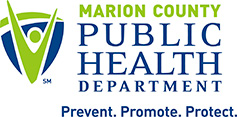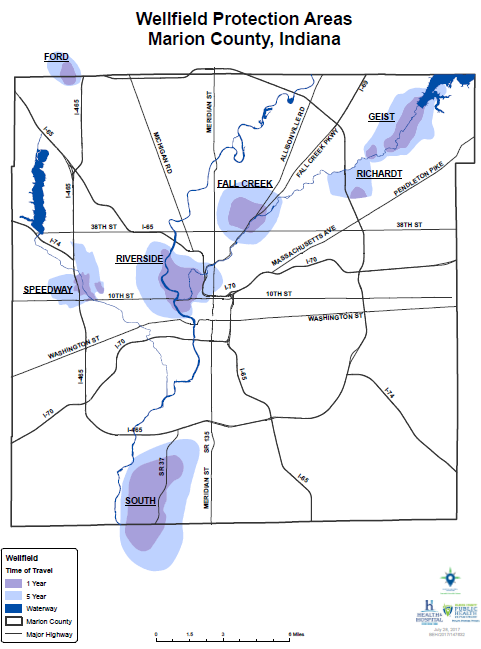We are in the process of updating our website. To access any of the documents on this page please email us at healthdept@marionhealth.org.
WELLFIELD PROTECTION PROGRAM
Do you know that less than 1% of the earth’s water is fresh water, and only about one-third of this 1% is available for human use? That means that only one-third of one percent of ALL the worlds water is available for drinking water, and most of this water is contaminated in some way.
A majority of Marion County’s drinking water comes from surface water like rivers, lakes, and streams. However, a considerable amount of freshwater is in the ground in the form of groundwater. Approximately 30% of Marion County’s drinking water comes from groundwater supplies. That means a third of all our drinking water is below ground, and comes to us via groundwater wells.
In order to protect this precious resource the Marion County Public Health Department Hazardous Materials Team conducts inspections of regulated businesses within Marion County’s seven Wellfield Protection Areas. These inspections are intended to protect our groundwater from contamination, which will allow us to continue to use this very scarce resource. Marion County first initiated an inspection program to protect groundwater in the mid-1990s with the implementation of the Marion County Wellfield Protection Zoning Ordinance. This ordinance was developed to ensure that all proposed developed business sites constructed in a Wellfield Protection Zoning District are conducting safe handling practices of potential groundwater contaminants. In January 2017, the Marion County Public Health Department established the Marion County Wellfield Protection Standards Ordinance which broadened these regulatory standards to include all new and established businesses operating in a Wellfield Protection Area. Staff members work directly with facilities to ensure compliance, and to encourage best business practices for facilities operating a business while storing, handling, managing, and/or transporting potential groundwater contaminants.
Inspection frequency is determined using several site specific factors including types and amounts of chemicals stored at a location, facility history including past spills, and previous inspection history.
THE HEALTH AND HOSPITAL CODE
Health and Hospital Code: Chapter 19 Non Residential Premises Ordinance
Health and Hospital Code: Chapter 20 Hazardous Materials Ordinance
Health and Hospital Code: Chapter 13 Wellfield Protection Standards
REVISED CODE of the Consolidated City and County INDIANAPOLIS/MARION, INDIANA
Wellfield Protection Ordinance of Marion County
EDUCATION
Marion County Wellfield Education Corporation
Good Business Practices for Wellfield Protection (9/2001)
Wellfield Ordinance Guidebook for Marion County Businesses
Guia de Ordenanza de los Campos de Pozos para la Sempresas del Condado de Marion
Maintenance Shop Dry Cleaner Guidance (English/Spanish)
TEMPLATES
Emergency Response Spill Prevention Plan: pdf Word
Employee Training Emergency Response Plan: pdf Word
Employee Training Spill Kit: pdf Word
Potential Groundwater Contaminants and Waste Inventory: pdf Word
Notification to Suppliers and Waste: pdf Word
Special Requirements Notice Agreement: pdf Word
Notification of Change of Ownership or Operation: pdf Word
Notification of Change of Occupant or Operation: pdf Word
SIGNS
In Spanish: pdf Word
No Chemical Disposal Dumping Sign: pdf Word
In Spanish: pdf Word
In Spanish: pdf Word
In Spanish: pdf Word
In Spanish: pdf Word
RESOURCES
City of Indianapolis ToxDrop Program
Marion County Wellfield Education Corporation



